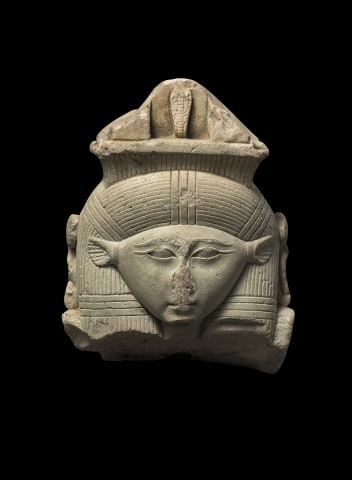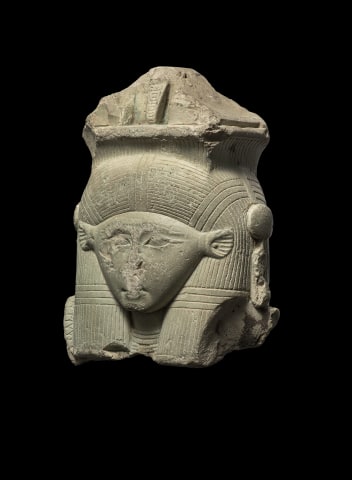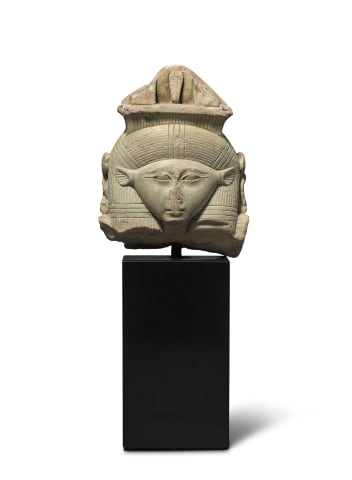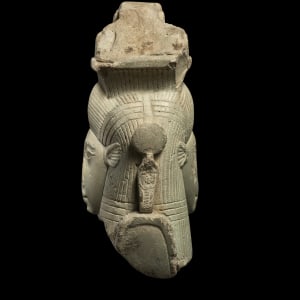Egyptian sistrum handle with head of Hathor, Late Dynastic Period, 26th Dynasty, c.664-525 BC
Faience
Height: 9.4cm
10759
Charles Ede, London
£ 14,000.00
Further images
Fragment of a naos-sistrum in a light green faience, each side presenting the same image of the head of Hathor. She wears a straight-bottomed, striated wig, the outer sides of...
Fragment of a naos-sistrum in a light green faience, each side presenting the same image of the head of Hathor. She wears a straight-bottomed, striated wig, the outer sides of which have a uraeus with sundisc. Her finely detailed face is particularly well-modelled, especially the eyes and her cow-like ears. A naos with a rearing cobra crowns her head. The surface chipped in some areas and the glaze a little worn.
The sistrum was a ceremonial rattle composed of a handle which supported a tall loop of flattened metal. Horizontal rods with small metal disks ran through the loop, so that when the sistrum was shaken it produced a musical tinkling, much like a tambourine. Faience examples were votive, and imitated these instruments.
The instrument was closely linked to the goddess Hathor who was also known as the Mistress of Faience, which is why her head featured so often on such objects.
The sistrum was a ceremonial rattle composed of a handle which supported a tall loop of flattened metal. Horizontal rods with small metal disks ran through the loop, so that when the sistrum was shaken it produced a musical tinkling, much like a tambourine. Faience examples were votive, and imitated these instruments.
The instrument was closely linked to the goddess Hathor who was also known as the Mistress of Faience, which is why her head featured so often on such objects.
Provenance
Odette Cohen, Brussels, Belgium; acquired 1966, thence by descent
Eric and Marion Van Offelen inherited the sistrum following the death of their mother Odette Cohen in 2014. She most likely acquired the sistrum during a trip to Egypt with the family in 1966. Having studied art history and archaeology at the University of Leuven, Odette Cohen was passionate about antiques. The sistrum was exhibited in a showcase in the living room until her death.
Exhibitions
Literature
Compare R.H. Blanchard, Handbook of Egyptian Gods
and Mummy Amulets (Cairo, 1909), no.25
There is an example from Memphis now in the Ashmolean Museum in Oxford, inv.no. AN1971.445
1
of 3







